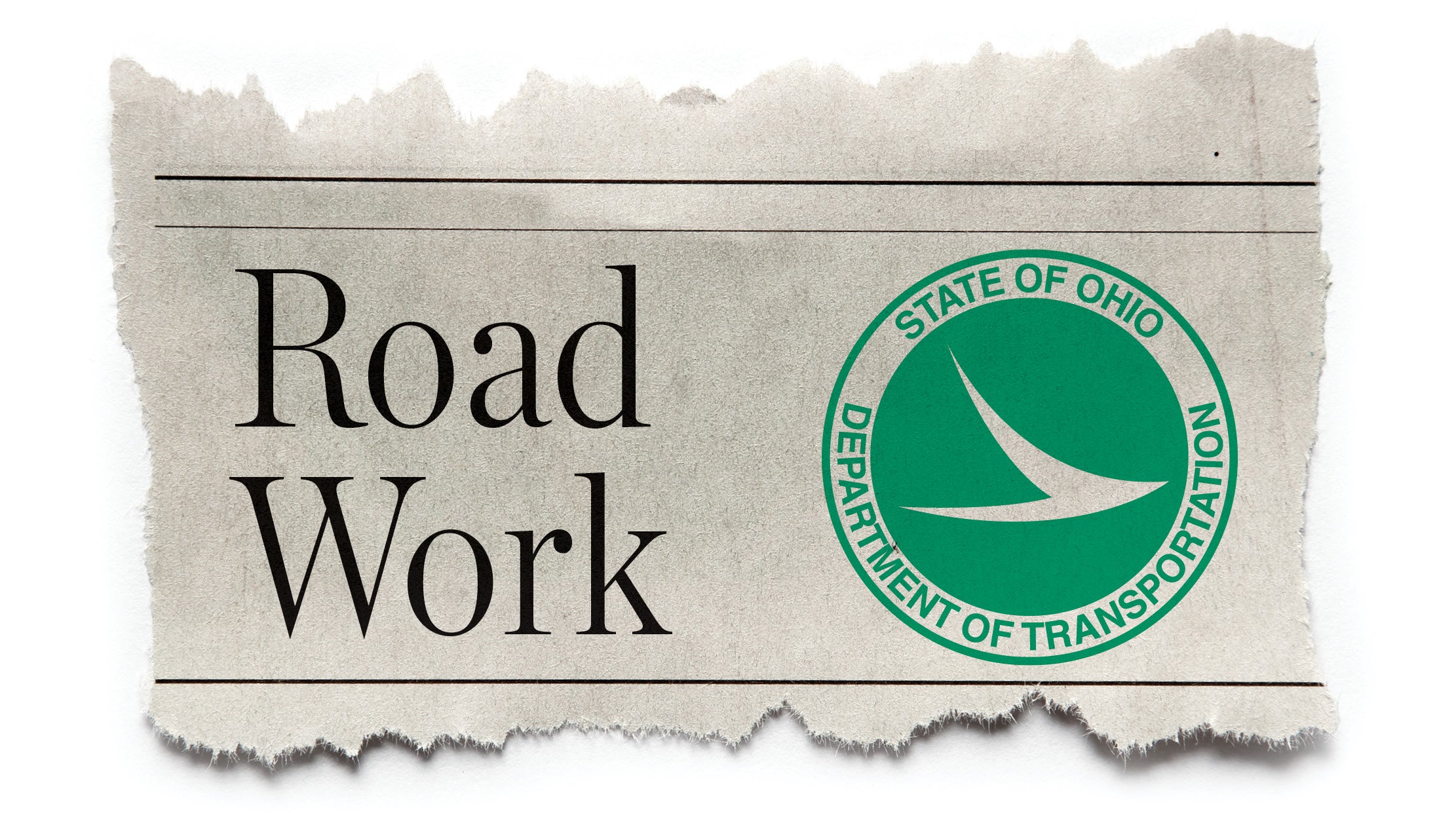Whose way was right?
Published 11:09 pm Saturday, July 25, 2009
CHESAPEAKE — It started out as a bike ride through the Village of Chesapeake on a quiet Tuesday evening in August last year.
But what happened before it was over is a point of much debate and may end up as a civil rights lawsuit pitting one of the bikers against the Lawrence County Sheriff’s Office and the Chesapeake Village Police.
Already the incident has hit the national radar when an account of it by Bob Mionske entitled “Road Rights” was recently published in “Bicycling,” a national monthly magazine and on its Web site bicycling.com.
Now comes the question: Will this bike ride again revive the eternal debate on whose rights take precedent: the individual and his freedom of movement or the police and its sworn duty to protect the public?
In Mionske’s account, a Huntington, W. Va., construction owner and cycling enthusiast named Tony Patrick, then 37, was pedaling through Chesapeake on Aug. 19, 2008, with another biker, who is also a nationally ranked racer.
The identity of the second cyclist was concealed in Mionske’s story because he was a minor.
Deputy Says Pull Over
The two had been out training with a group of other racers and had gotten separated from the pack. As they rode into the village limits, an incident occurred that is now the focus of a potential court case.
Mionske quotes Patrick in his online account as follows:
“We were riding along and about 300-400 meters beyond the library, this sheriff’s car suddenly pulled up alongside me and the Deputy rolled down the window and said, ‘You guys shouldn’t be riding in the road.’ I responded ‘We have as much right to be in the road as you do.’ “
“Tony and (the other cyclist) both claim the Deputy responded to Tony’s assertion of that right by yelling, ‘Get off the (expletive) road’ several times. Months later at (a hearing in Lawrence County Municipal Court) when asked whether he had used profanity during his encounter with the cyclists, the deputy replied ‘Possibly.’”
The transcript of the hearing confirms this was the deputy’s response.
Biker Tased
The end result of this encounter between Patrick and the sheriff’s deputy and a Chesapeake Police officer who provided backup ended with both men using their Tasers on Patrick. The cyclist was then charged with obstructing official business, resisting arrest, attempted assault on a police officer and operating a bike on the road. Patrick was taken to jail and later released on a $25,000 bond. The juvenile was released to his parents.
When the case was brought to the county municipal court, Patrick faced a charge of disorderly conduct, a 4th degree misdemeanor; resisting arrest, a 2nd degree misdemeanor; failure to comply, a 1st degree misdemeanor; and operating a bike on the road. The case was set for trial on Jan. 30, 2009, however on Jan. 12, it was dismissed without prejudice.
Now Patrick has an attorney and wants the sheriff’s office and the Chesapeake Police to answer for their actions.
According to his attorney, Steve Magus of Cincinnati, Patrick would like to come to an agreement without a lawsuit. But a suit could happen.
“We are saying to them we would like to work out something else short of filing a lawsuit,” Magus said. “His position is that he was allowed to ride his bike. He didn’t have to pull over. The cops had a badge and a gun and a Taser. It was basically a road rage case.”
Right now, Magus says he is gathering information to decide the next step, filing freedom of information requests including one on the Tasers fired.
“He suffered second and third degree burns from the Taser, has burn scars and cracked his head on the pavement,” Magus said.
Civil Suit Possible
If the opposing parties can’t resolve the matter, Magus said there could be a number of claims filed against the law enforcement agencies, including assault and battery, civil rights violations and excessive force. He would expect the suit to be filed in federal court in Cincinnati.
“They had no right to stop him,” Magus said. “When they didn’t have the right to stop him, they didn’t have the right to shoot him. Any force is excessive.”
In a report released in 2006 by the U.S. Department of Justice there were just over 25,000 citizens’ complaints about police use of force during 2002 against large state and local law enforcement agencies. That translates to 6.6 complaints made per 100 full-time officers.
Only 8 percent were found to be justified and disciplinary action followed.
About 25 percent were “unfounded, meaning the complaint was not supported by facts or the alleged incident did not occur,” the report states. In about another quarter the police actions were deemed “lawful and proper.”
Just as any story has more than one side, there is a different interpretation of the events on that August evening when seen through the eyes of the officers involved.
Deputy Gives His Side
In the narrative sheriff’s deputy C.R. Hammonds filed with his arrest report, the deputy describes the cyclists as confrontational and disrespectful. The following account comes directly from Hammonds’ report.
The deputy said when he first saw the two cyclists going 5-10 mph, he watched to see if they got in single file or speeded up. When they did not, he got out of his cruiser to talk with them.
“One of the males later identified as Anthony Patrick yelled at me and stated they have as much right on the road as anyone else and both subjects kept going.”
Then Hammonds got into his cruiser and put on the lights and sirens.
“I was giving commands by the PA and at times out the window,” the report states. “I advised dispatch I was in pursuit of the bicycles. On several occasions the subjects stood up and shaked (sic) their butts at me taunting me.”
As the three approached the bridge leading to Huntington, Hammonds passed the cyclists and stopped his car in front of Chesapeake Auto Sales.
“The pursuit had went on for almost 1 mile. I got out and pulled my Tazer. (sic) I yelled for the subjects to stop and that I was going to Taz them. Both subjects tried to avoid me by cutting through the car lot.”
Hammonds said he used his Taser on Patrick with little effect. He ordered the two to get on the ground, which they did not, he reported.
“I attempted to grab Patrick and he pulled away,” the report said. “He then moved away from me and picked up his bike to try and throw at me or hit me.”
He Lunged At Me
Next Hammonds pulled out his baton and ordered Patrick to put his bike down. Patrick complied. Then Chesapeake officer Dennis Gibson, now the village’s police chief, arrived on the scene.
“Patrick lunged at me and Gibson tazed the subject. He went to the ground and we kept giving him commands to stay down and he tried to get up and he was Tazed for the second time. He finally became compliant and he was handcuffed.”
A narrative filed by Gibson corroborates Hammond’s account.
“The subject was very combative and aggressive toward the Deputy and was wanting to continue to argue and fight,” Gibson’s report states. “I then pulled my taser out and told the subject to get on the ground before I had to tase him again and he started cussing me. I told the subject one more time and he would not comply …. He continued toward Deputy Hammonds and I advised Deputy Hammonds to step back that I was going to tase the suspect again. After the second tase the subject went to the ground.”
Attempts made by The Tribune to talk with Hammonds, Gibson and Lawrence County Sheriff Jeff Lawless were unsuccessful.
Three days after the incident the case was filed with Lawrence County Municipal Court.
On Oct. 17, a hearing was held before Municipal Court Judge Donald R. Capper on the defendant’s motion to dismiss the case because the officer had no probable cause for the arrest.
After the hearing and with briefs from both sides, Capper granted the defendant’s motion to dismiss.
Then on Jan. 12, almost five months to the date of the incident, the Lawrence County prosecutor’s office withdrew the charges and the case was dismissed without prejudice, meaning the charges could be refiled at a later date.
In Capper’s 11-page decision, the judge addressed the possible violation of Patrick’s Fourth Amendment right, which protects citizens from unreasonable searches and seizures. Search and arrest warrants require judicial sanction and probable cause.
“Once the defendant raises the issue concerning an arrest made without a warrant, the state has the burden of going forward and persuading the court that an arrest made without a warrant falls within an exception to the warrant requirement,” the judge stated.
Capper goes on to write that the court heard no testimony from Hammonds that he told Patrick why he was asked to pull over.
“This case broadly concerns the tension between bicycle riders and motorists using the same roadways,” Capper states.
No Law Broken
In the Ohio Revised Code bikers, “shall (ride) no more than two abreast in a single lane.” That was the case with Patrick and the juvenile.
The judge said the biker may have acted in a “rude, inconsiderate and possibly dangerous, mostly to himself, way,” when he would not ride in single fashion, but he did not violate the statute.
Patrick was also not in violation of the slow moving vehicle statute since there was no evidence that he was riding in an unreasonably slow speed for a bike.
“As minimally intrusive as it may seem to require the defendant to stop and talk with the officer when requested, he had a fundamental right to be left alone under the Fourth Amendment and in this court’s opinion was not required to stop,” Capper wrote.
With the criminal case dismissed the next arena for all players in this drama may be in a civil courtroom.
Darrell A. H. Miller is an assistant professor of law at the University of Cincinnati whose specialty includes civil rights. He spoke to The Tribune about possible issues that could come up in such a lawsuit and was not addressing the Patrick case specifically.
The civil lawsuit could go like this, Miller said: Patrick claims a Fourth Amendment violation; the police could respond with something called “qualified immunity.”
Qualified Immunity
That is a relatively recent concept that says, “officers are only liable, if they ‘violate clearly established statutory or constitutional rights of which a reasonable person would have known, “ Miller said.
“What would an objective police officer under these circumstances have thought,” the professor said. “If the answer to that question is there is no reason for him to know that it is a constitutional violation, (that would be qualified immunity.) Qualified immunity is a way to preserve the balance between police officers Tasing willy nilly and police officers Tasing people in circumstances when they should be Tased.”
As to a possible outcome in the Patrick case Miller did not speculate, but said “lawsuits under these circumstances tend to be very fact specific, tend to be hard to win unless it is so egregious like a police officer comes up behind him and slams him with a billy club. … They are difficult because of the qualified immunity doctrine. You have to get pass the stage where the judge thinks there is a likelihood that things are debatable.
“It is a harder issue than in a car crash.”




